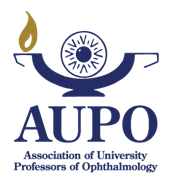Abstract
Background: With Step 1 becoming pass/fail, more students are considering taking a research year in ophthalmology prior to entering the application cycle. The purpose of the current study was to compare baseline characteristics and outcomes statistics between matched US-MD ophthalmology applicants with and without a dedicated research year.
Methods: Self-reported data from the publicly available OphthoMatch spreadsheets (2021-2022 and 2022-2023 cycles) were analyzed. US-MD senior applicants were included in the analysis; MD/PhD, DO, IMG students, and reapplicants were excluded.
Results: Of 127 matched US-MD senior applicants, 23 (18.1%) reported taking a research year. Baseline characteristics including underrepresented in medicine (URiM) status, gender, class quartile, USMLE Step 2 score, number of ophthalmology rotations, and having a home department were similar between both groups. Research year students had a statistically significant lower Step 1 score (243.1 ± 8.7) compared with non-research year students (247.3 ± 10.8 [p = 0.030]) as well as significantly lower Alpha Omega Alpha (AOA) membership (33.3%) and Gold Humanism Membership (5.9%) compared with to non-research year students (46.5%; 23% [p < 0.05)]. Both groups received a similar number of interview offers (p = 0.260). Research year students significantly matched higher on their rank lists (1.9 ± 1.8 choice) compared with those without a research year (3.0 ± 2.1 choice; p = 0.002).
Conclusion: US-MD matched students completing a research year before applying to residency tended to have lower Step 1 scores and AOA and Gold Humanism membership rates, and they matched closer to their top choice compared with non-research year students; however, there was no difference in number of interview offers between the two groups.
Received Date
26 Feb 2024
Accepted Date
2 Feb 2025
Recommended Citation
Flood, Justin; Raju, Jhansi; and Shah, Sagar Jagdish
(2025)
"The Impact of a Research Year for Matched US-MD Seniors,"
Journal of Academic Ophthalmology: Vol. 17:
Iss.
2, Article 3.
DOI: https://doi.org/10.62199/2475-4757.1289
Available at:
https://www.aupojournal.org/jao/vol17/iss2/3

